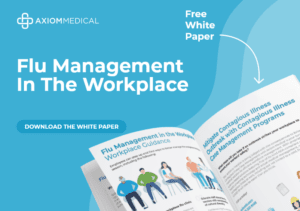Resilience is a muscle. And like any muscle, it needs to be challenged regularly to become stronger. The key word here is “challenged.” Strongman Arnold Schwarzenegger famously said, “Strength does not come from winning.” Instead, he said that strength arises from struggle, achieved “after you go through hardships and decide not to surrender” and “you make an impasse passable.” ¹ Take a moment and reflect on your work history—what hurdles have most shaped your professional growth?

While we’ve all persevered through professional challenges, there’s always room to push ourselves further, especially within our teams. Team resilience, however, is a little more complicated; it’s not just about individual grit but the collective strength and synchronization of the group. Think of a rowing team—the boat only moves forward when members coordinate their strokes together for maximum impact.
In our last post about Leadership’s Role in Resilience, we explored practices for coaching resilient employees. This piece builds on that foundation with four additional actionable exercises for leaders and teams.
1. Don’t Oversimplify Resilience
When words and concepts become popular, they risk becoming empty buzzwords. Avoid that pitfall by thinking of resilience as an umbrella concept covering three key skills:
- Emotional Regulation: How do you manage stress and maintain focus during challenging periods?
- Adaptability: Can you pivot easily when faced with unexpected changes?
- Purpose-Driven Motivation: Do you have something that fuels your commitment and engagement during times of adversity?
All these traits exist in relation to one another. Strong emotional regulation enhances adaptability, while a sense of purpose sustains motivation during difficult transitions. Our individual capabilities in each department will fluctuate depending on the situation and season, but as a group resource, these traits help teams handle stress, collaborate effectively, and maintain high morale despite setbacks.
With this more nuanced definition of resilience in mind, take the time to ask your team what the word means to them. Sharing a common meaning will foster alignment and prime individuals to contribute to group flow—that harmonious state of teamwork where everyone is in sync.
2. Do Focus on Emotional Intelligence (EQ)
While team members may be hired for their IQ, Emotional Intelligence (EQ) is what keeps them there. EQ is the ability to understand, manage, and express emotions effectively. It strengthens connections and builds trust, which is essential for team resilience. Despite all the fancy language, it’s a straightforward theory: soft skills produce hard results. We like working with likable people. If a team is comprised of likable individuals who enjoy working together, it will be a stronger team.
To enhance the team’s EQ, encourage your team to recognize emotional cues, validate one another’s concerns, and cultivate an environment where everyone feels heard. Practicing active listening and dealing with conflicts empathetically—especially during stressful times—will help create a supportive team atmosphere. Remember, when under pressure, it’s essential to step back, breathe, and respond with patience and understanding.
3. Mind your Stress
Stress can strengthen resilience, but what’s often overlooked is that too much stress could sink the ship entirely. Think about weightlifting at the gym—incrementally increasing weight helps build strength, but too much strain can lead to injury. The same principle applies to resilience training. An appropriate level of challenge spurs growth, but excessive stress can lead to burnout and poor performance. Therefore, it’s important for leaders to frequently check in and make sure that each member feels like their workload is manageable. This could be as simple as an open conversation where team members share how they’re coping or conducting short surveys to gauge stress levels. It could also take the form of encouraging team members to take regular breathing breaks.
Breathing exercises can take many forms, whether seated or standing, with eyes open or closed. The only requirement is that practitioners temporarily pause what they’re doing to focus solely on their breath for somewhere around two to five minutes. If practiced consistently, these breathing breaks will help team members be more cognizant of their own stress levels (which oftentimes go unnoticed and slip out in subconscious ways) and encourage them to stay calm and focused under pressure. Teams that consciously manage their stress are better equipped to pivot and persevere during turbulent times.
4. Empower Through Ownership
Micromanagement is insidious because it makes professionals doubt their own capabilities and disengage from outcomes. What’s the opposite of this scenario? Ownership.
Ownership means giving team members autonomy over their work, trusting their judgment, and making them accountable for outcomes. When team members feel a strong sense of ownership over their projects, they care more about the quality of deliverables and the overall health of the team. And when they encounter an obstacle, their personal investment in the project motivates them to engage in creative problem-solving. This positive feedback loop will result in a natural strengthening of resilience across the team. So, make way for autonomy; encourage team members to dictate the details of their own projects and become subject matter experts.
Stronger Together: Your Team’s Resilience Workout Plan
These four exercises—understanding the complexity of resilience, focusing on emotional intelligence, managing stress effectively, and empowering through ownership—will keep your team in peak condition. By practicing them consistently, leaders can cultivate a culture of adaptability, collaboration, and endurance.
To explore actionable strategies for enhancing employee resilience and leadership effectiveness, watch our webinar Bounce Back Stronger: Resilience Training for the Modern Workforce with Drs. Kertay and Cherry, or use Axiom’s resilience screening tool to assess your team’s strength and growth potential. For insights on maintaining resilience through the holiday season, watch our winter webinar Under Pressure: The Hidden Health Dangers of the Holidays.
¹Christy, M. (1982, May 9). Winning according to Schwarzenegger. Boston Globe, p. 51.

Cain Boney is a contributor to Axiom Medical’s blog. With a career dedicated to writing about the workplace, Cain focuses on how employee well-being affects organizational success and sustainability in the long term.










